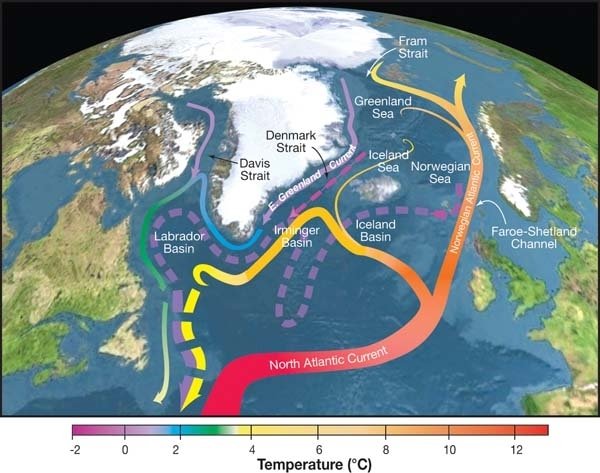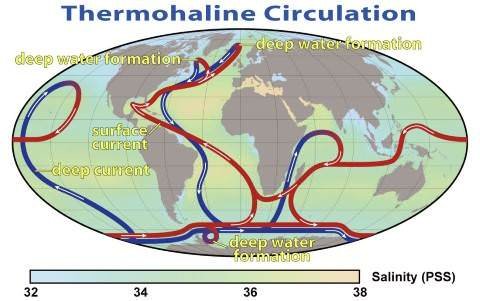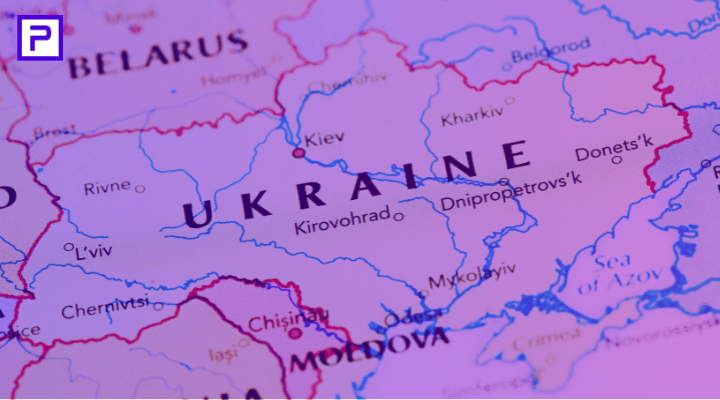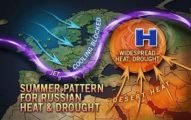
Atlantic Meridional Overturning Circulation (AMOC)
Subscribe to Never Miss an Important Update! Assured Discounts on New Products!
Must Join PMF IAS Telegram Channel & PMF IAS History Telegram Channel
- AMOC is characterized by a northward flow of warm, salty water in the upper layers of the Atlantic, and a southward flow of colder, deep waters that are part of the thermohaline circulation.
Thermohaline Circulation
Thermohaline Circulation (Wikipedia) |
How Atlantic Meridional Overturning Circulation (AMOC) works?
- As warm water flows northwards in the Atlantic, it cools, while evaporation increases its salt content.
- Low temperature and a high salt content raise the density of the water, causing it to sink deep into the ocean.
- The cold, dense water deep below slowly spreads southward.
- Eventually, it gets pulled back to the surface and warms again, and the circulation is complete.

Image Credits: Wikipedia
Importance of Atlantic Meridional Overturning Circulation (AMOC)
- AMOC aids in distributing heat and energy around the earth (heat budget).
- Western Europe’s climate is less harsh even in winters because of AMOC (Gulf Stream, North Atlantic Drift).
- It acts as a carbon sink by absorbing and storing atmospheric carbon.
- AMOC’s carbon sequestration has significant implications for evolution of anthropogenic global warming.
Cause of concern
- AMOC has undergone exceptional weakening in the last 150 years compared to the previous 1500 years.
- Climate models suggest that the AMOC will weaken over the 21st Century as greenhouse gases increase.
- This is because as the atmosphere warms, the surface ocean beneath it retains more of its heat.
- Meanwhile increases in rainfall and ice melt mean it gets fresher too.
- All these changes make the ocean water lighter and reduce the sinking in the conveyor belt (weaker AMOC).
- A weaker AMOC will bring less warm water northwards, and this will partly offset the warming effect of the greenhouse gases over western Europe.
Effects of AMOC Slowdown
- IPCC report indicates that AMOC has already weakened.
- Any substantial weakening of the AMOC would cause
- further decrease in marine productivity in the North Atlantic (less sinking will lead to less mixing of water),
- more storms in Northern Europe,
- less Sahelian summer rainfall and South Asian summer rainfall,
- a reduced number of tropical cyclones in the Atlantic and
- an increase in regional sea level along the northeast coast of North America.
Rising temperatures in Indian Ocean can boost Atlantic’s ocean currents temporarily
- For thousands of years, AMOC has remained stable, but since the past 15 years, it has been weakening.
- However, rising temperatures in the Indian Ocean can help boost the AMOC and delay the slow down.
Indian Ocean’s role
- The Indian Ocean is one of the fingerprints of global warming.
- As the Indian Ocean warms faster and faster, it generates additional precipitation.
- This draws more air from other parts of the world to the Indian Ocean, including the Atlantic.
- With so much precipitation in the Indian Ocean, there will be less precipitation in the Atlantic Ocean.
- Less precipitation will lead to higher salinity in the waters of the tropical portion of the Atlantic.
- This saltier water, as it comes north via AMOC, will get cold much quicker than usual and sink faster.
- This would act as a jump start for AMOC, intensifying the circulation.
- However, scientists don’t know for how long this enhanced warming in Indian Ocean will continue.
- If other tropical oceans’ warming, especially the Pacific’s, catches up with the Indian Ocean, the advantage for AMOC will stop.
Paid users can download this content in PDF & DOC formats from PMF STORE (October Geography Related Current Affairs)




![PMF IAS Environment for UPSC 2022-23 [paperback] PMF IAS [Nov 30, 2021]…](https://pmfias.b-cdn.net/wp-content/uploads/2024/04/pmfiasenvironmentforupsc2022-23paperbackpmfiasnov302021.jpg)







Good content